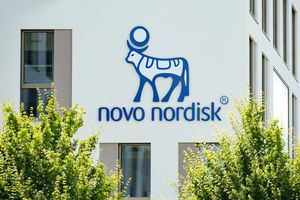Oh, how the tide has turned.
Not long ago, you couldn’t find many NYSE or Nasdaq stocks hitting new 52-week lows. Now the opposite is true.
In Tuesday’s trading, there were 171 new 52-week lows on the NYSE, 4.5 times the number of new highs. Over on the Nasdaq, the multiple was even greater, with 392 stocks hitting new 52-week lows, 6.5 times the highs.
Various factors contributed to the change in investor sentiment. One of them is “bond king” Jeffrey Gundlach, saying on Monday that most assets are overvalued and that investors should move more money to cash.
“‘... I think valuations are just incredibly high. And the health of the equity market in the United States is among the least healthy in my entire career,’ he said, noting that the 'classic valuation metrics are off the charts,’” MarketWatch contributor Barbara Kollmeyer reported.
Unless the markets get some excellent news in the next few days, we could head for even higher multiples between new 52-week lows and new 52-week highs.
As I looked through yesterday’s list of new highs and lows, the 22 ADRs (American Depositary Receipts) caught my attention because among Gundlach’s comments was the suggestion that non-U.S. stocks were a wise idea.
With that in mind, I’ve selected three of the 22 that I think could rebound in the weeks and months ahead.
RELX (RELX)
The largest of the three stocks, RELX (RELX), hit a new 52-week low of $40.00 yesterday, marking its 13th new 52-week low of the past 12 months. Its share price is down 11% over the past year and 29% since hitting a 52-week high of $56.33 on May 27. It is at its lowest level since January 2024.
RELX is a global provider of information-based analytics and decision tools for professional and business customers. It has customers in more than 180 countries and offices in 40 countries. Approximately 40% of its employees are in North America.
It has four major operating segments: Risk (35% of revenue), Scientific, Technical & Medical (30%), Legal (20%), and Exhibitions (13%).
Through the first nine months of 2025, its revenues have grown by 7%, with growth across all four segments. Its adjusted operating profit through June 30 was 1.652 billion British pounds ($2.17 billion), 9% higher year over year.
As for its balance sheet, it finished the first half of the year with net debt of 7.32 billion British pounds ($9.60 billion), 2.2 times EBITDA (earnings before interest, taxes, depreciation, and amortization) — a healthy multiple.
Of the 10 analysts who cover its stock, eight rate it a Buy (4.50 out of 5), with a target price of $58.95, which is 47% above its current share price.
RELX is expected to earn $1.71 per ADR in 2025. It trades at 23.4 times this estimate. That’s the lowest it’s been since 2023.
If you’re a dividend investor, the 2.2% yield should be attractive. It would be more appealing if RELX’s options volume were higher. Sadly, that’s not the case.
Chagee Holdings (CHA)
Chagee Holdings (CHA) hit a new 52-week low of $14.20 yesterday, its 33rd new low since going public in April. Its share price is down 49% since the IPO.
Primarily an operator of tea houses in China, it sold 14.68 million ADRs at $28 per ADR on April 17. Each ADR represents one Class A share.
I don’t spend a lot of time focused on Chinese stocks, but that doesn’t mean I think they’re uninvestable. It’s a large population with significant economic possibilities despite the political friction with the West.
Is the 49% haircut merely a case of the IPO pricing being too rich? That’s the million-dollar question.
Founded in 2017, it has grown to over 7,000 tea houses, with 97% franchised, and just 3% located outside China.
To grow its North American business, it hired Aaron Harris as Chief Development Officer for the region. Harris knows a thing or two about the North American market. He was most recently Senior Vice President of Development at Dutch Bros (BROS).
It has one location in Los Angeles. More are likely to follow. Most of its locations outside China are in Southeast Asia. In July, it sold 51% of its Thailand business to a regional operator for $4.4 million. The move allows it to focus on strengthening its presence in China while expanding in the U.S.
The big issue for investors is that growth is slowing and margins are being squeezed by increased competition in China and higher operating expenses from its overseas expansion. That’s part of business.
The biggest concern I see from its China business is the steep decline in average monthly GMV (gross merchandise value) per tea house. In Q2 2025, it was 404,352 Chinese yuan ($56,887), 24.8% lower than in Q2 2025, and 6.4% less than in the previous quarter.
So, opening more stores in China isn’t the answer. Whether North America can ride to the rescue is debatable. As David’s Tea (DTEAF) has shown, we are not tea drinkers like China, India, or the UK. It’s going to be a tough slog.
That said, it had $1.2 billion in cash on its balance sheet at the end of June and retained earnings of $486 million, an indication that temporarily lower margins won’t be the end of the company by any means.
Chagee is a much better bet at $14.20 or thereabouts. However, only aggressive investors should consider it.
Opera (OPRA)
Opera (OPRA) hit a new 52-week low of $12.78 yesterday, its 16th such low in the past 12 months. Its share price is down 34% over the past year.
When it comes to browsers, I’ve tried several times to set Opera as my default. I never stick with it; I revert to either Chrome or Safari, depending on the device.
That said, the Norwegian company does pique my interest.
Opera went public in July 2018, selling 9.6 million ADRs, each representing two ordinary shares, at $12 per ADR. It used the gross proceeds of $115 million for research and development (40% of funds), marketing (25%), and acquisitions and strategic partnerships (25%).
At the time, it had 321.7 million MAUs (monthly active users) and generated $128.9 million in revenue, split among three revenue streams: Search (53%), Advertising (32%), and Technology Licensing (15%).
Today, it has 284 million MAUs (12% less) and is expected to generate $601.5 million in revenue at the midpoint of its guidance. In the seven years since it went public, it has grown its revenues in six of those years.
Over the past eight years, advertising has become the biggest revenue generator. In Q3 2025, the revenue stream accounted for 63% of the topline, almost double the 2017 figure. Search’s contribution has fallen to 37%, with technology licensing plummeting off a cliff.
When it went public, Opera’s 2017 operating profit was $10.2 million, with an operating margin of 7.9%; today, its operating profit in the trailing 12 months ended Sept. 30 was $90.7 million, with an operating margin of 15.5%.
Over the past four years, Opera’s ARPU (average revenue per user) has grown from $0.75 in Q3 2021 to $2.13 in the latest quarter, a CAGR (compound annual growth rate) of 29.8%.
In great shape, its stock has never been cheaper.
On the date of publication, Will Ashworth did not have (either directly or indirectly) positions in any of the securities mentioned in this article. All information and data in this article is solely for informational purposes. For more information please view the Barchart Disclosure Policy here.
More news from Barchart
- David Tepper Is Betting Big on This High-Yield Dividend Stock. Should You?
- As Musk Hints That Tesla Could Make Its Own AI Chips, Should You Buy TSLA Stock?
- Loop Capital Says Ride the ‘Waves of AI Optimism’ and Buy Google Stock Here
- Is Meta Stock a Buy or a Sell Before Michael Burry Drops His Bombshell on November 25?





